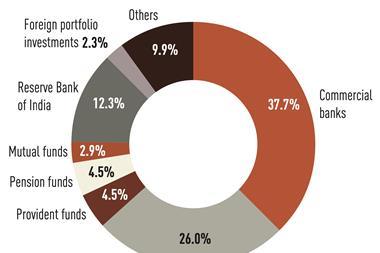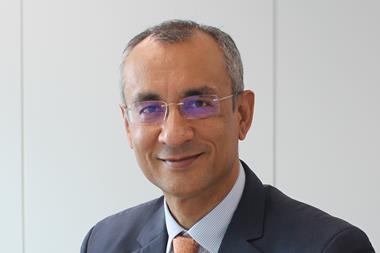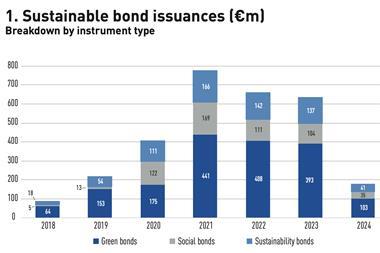A meeting in Hong Kong of pension experts from around the world has demonstrated a number of things about pensions in Asia. Firstly, that any second pillar system has to be mandatory; secondly that contribution levels can never be too high, if they are to realistically meet adequate retirement funding levels. And thirdly, as Olivia Mitchell, professor at the Pension Research Council of Wharton School said, “We are all going to have to work longer and pay more attention to longevity. There is a 1% chance that a baby born to day will live to be 200.”
Professor Mitchell was particularly concerned about China, given the high percentage of earnings required to provide a sustainable pension system. “Coverage rates are so low; we need to include more of the workforce in pension schemes.” The slow pace of pension policy development in China is a growing concern. With no new initiatives emanating from central government and Premier Li Keqiang seemingly at odds with President Xi Jinping on this, adequate coverage looks a forlorn hope for many years to come. The only saving grace is the gradual development of China’s domestic mutual funds market. With insurance companies now able to gain approval to sell fund products, there is a great scope for expansion of the investor base. However, within the confines of pensions, as China Universal Asset Management CEO Andy Lin explains, “On enterprise annuity, for example, there are concerns about investment limitations and the limited role of trustees. Control by the enterprise itself also makes it hard for asset managers to access the market.”
Brigitte Miksa of Allianz, whose studies of pension sustainability have helped many countries assess their challenges, suggested we are seeing a move back to Government controlled mandatory pensions and, it is hoped, a greater integration of the first and second pillar pensions. The mandatory systems are not without their pitfalls, as experience in too contrasting markets, Australia and Hong Kong shows. Ross Jones of APRA revealed that in Australia, what you get with compulsory employer contributions is a high level of indifference among scheme members.
While there is recognition that Hong Kong is making progress on improving coverage for MPF, when it comes to retirement income adequacy, the territory is falling short, with only China, India and Thailand in a worse position on the global pensions sustainability index produced by Allianz. Although MPF contribution rates are being raised, Anna Wu, chairman of Hong Kong’s MPF acknowledges that the threshold for maximum contributions is still way too low.
When the Schroders company pension scheme in the UK went from DB to DC, they worked out that on a 40 year horizon and generating a 5-6% return, the contribution rate would have to be 21%. There are very few, if any, examples of such rates around the world. Ross Jones added that 9% was considered adequate on the assumption of 40 years of continuous employment at a 6% return, which would give a 70% replacement rate. But there is no uniform acceptable rate. It is entirely a question of what is practical and politically expedient in each country. Not all countries can be like Australia and while it is fine for proponents from the US, UK and Australia to talk about how they have done it, the same approach might not work in other places. Angel Melguizo, Labour Markets and Social Security Specialist at the Inter-American Development Bank pointed out that the experience of developed nations offers little guidance to Asia. “There is no point tying it to employment, if a large proportion of the workforce is informal, as they are in Latin America, India and China. However, informal workers are not informal all their life, so it’s important to design schemes that allow flexibility of contributions.”
It was agreed that most people have neither the time, knowledge or inclination to make the appropriate decisions, whether young or old. Inertia and fear are the overriding emotions. That’s why target date funds have been so successful in the US, according to Philip Lin of T. Rowe Price. The US market for target date funds has grown from $150bn to $500bn in the last five years and is estimated to grow to $3.7trn by 2020, to be 48% of pension assets.
Anna Wu said the Hong Kong Government is considering a number of measures to improve flexibility for members and streamline administration. In particular, Wu stated that plans are well advanced for changes to the lump-sum pay-off rules. MPF is awaiting the legislative seal of the approval for options including early or phased withdrawal. MPFA Executive Director Darren McShane confirmed that new policy is imminent that would include an annuity component. Among other measures, Wu also said the government is going to consult with the industry on fee capping by the end of the year, although there was some doubt as to how this can be achieved.
The HK Government is concerned about the proliferation of small schemes. The average MPF scheme has only 12 members and as Nikko AM’s Blair Pickerill pointed out: “For a company running a noodle shop, there is no HR department”. Assessing the idea of scheme consolidation, McShane said: “It’s hard to put the choice genie back in the bottle. His main concern is the risk differential between the top and bottom default funds, which is 700 times: “not 7 times, but 700 times. We need to standardise. We will have to take some leadership from the government and regulators having regard to what’s happening elsewhere in the world. Then we can forge a regulatory solution.”
Being an event for and by global funds industry players, there was a lot of talk about the need for better informed investors. That might have other, less welcome consequences for the fund groups themselves, not least pressure on fees. That fees are too high in Asia is a fact; in Singapore for example, there is an average 4.9% sales load and over 2% TER, compared to a weighted average of fees in the US of 1.5% and often lower than 1%. Financial literacy is another keep obstacle to the wider acceptance of mutual funds and retirement saving. In the US, awareness has often been perceived to be better than in other countries. But a recent survey done by Wharton revealed investors’ ignorance of simple interest calculations, or the relative risk of holding one stock and one mutual fund. There is evidence that financial education in high school has a positive effect. Olivia Mitchell said, “I believe you have to start teaching them as children – the ‘Bank of Mom’ is a good concept, that teaches children to live within their means. Akiko Nomura from Nomura Institute of Capital Markets Research said that Japanese companies auto-enrol their staff in pensions education. Will Sandbrook of the UK’s NEST scheme explained that the real growth has come in group personal pensions, which he described as “like pillar 2.5” The biggest change for the UK came with the October 2012 ntroduction of auto-enrolment for all eligible employees in the UK, with an 8% contribution split between 5% employee and 3% employer. Sandbrook claims it is really addressing the coverage issues. The problems inherent in a member choice environment are compounded by the sheer unpredictability of a individual’s future circumstances. As Brigitte Miksa put it: “You’re asking people to make complex decisions , such as what is your retirement income likely to be at age 65? We talk about financial literacy buy you can’t expect people to make these decisions.” She suggests it is best to think more about the default option – to bring in people who are not engaged: “It gets around the issue of apathy and doesn’t introduce any issue of cost.” One of the most important of Miksa’s contentions is that investors, and fund industry professionals, need to give more emphasis to the issues around funding for retirement, particularly in the run-up to retirement. She says Allianz’s studies have shown the key to understanding longevity as an underlying driver of retirement risk means not reducing the equity component of the investment glidepath at retirement. The assumption to that you should reduce the equity/growth component before or at retirement, is misplaced. Whatever pot you have needs to keep growing. ASFA CEO Pauline Vamos suggested that no one has nailed drawdown investing. There has been too little attention paid to the management of assets in the ‘decumulation’ phase It has been a busy year for superannuation professionals in Australia, with a lot of changes to the superannuation market structure. Vamos is particularly pleased with the My Super platform, effective from July 1st, which she says provides “a more intelligent way of looking at investment; low cost fund options and real innovation.” At the same time, the new Stronger Super regime will result in consolidation of funds from 300 to 100; smaller funds moving onto platforms so they can get access to a whole range of investment options. Vamos added there is a new opportunity for asset managers to talk to super fund trustees direct, with the waning influence of asset consultants.












No comments yet